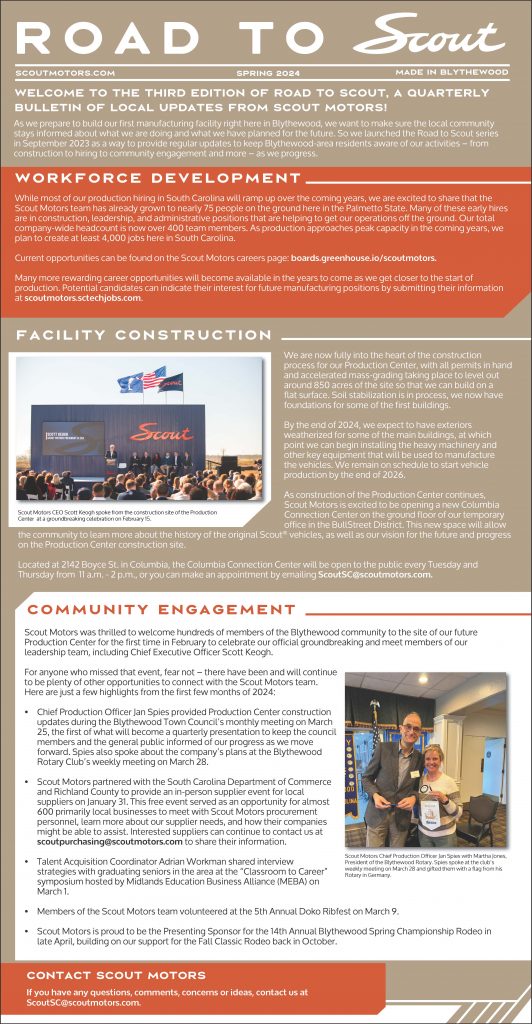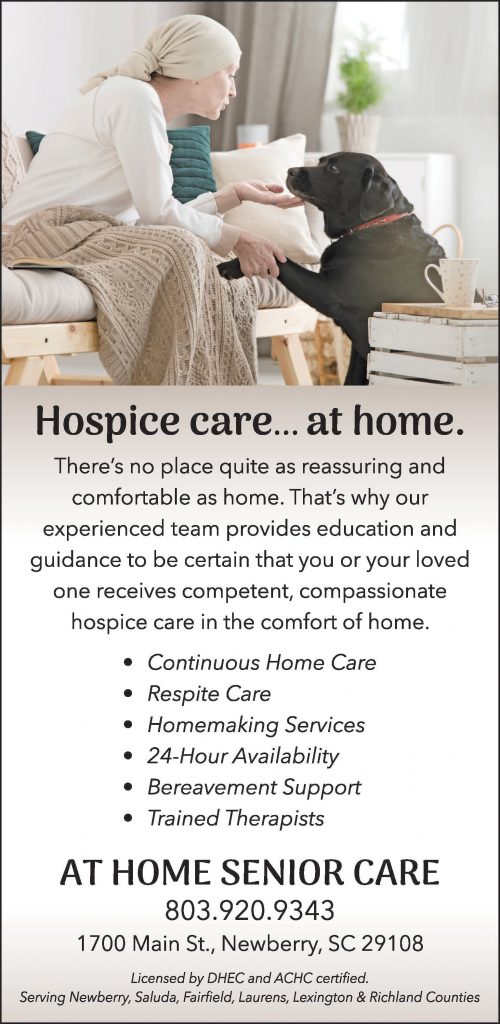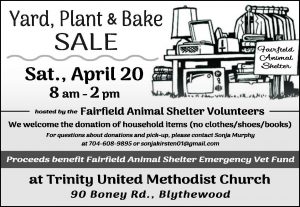WINNSBORO (March 18, 2016) – A draft animal control ordinance was sent back to committee by County Council Monday night after members of a local animal rescue group took Council to task over recent amendments to the ordinance that would have loosed restrictions on shelter and tethering.
“Life at the end of a chain is not a very happy life,” Minge Wiseman, a member of the Hoof & Paw Benevolent Society, told Council during the evening’s first public comment session. If tethering were against county ordinance, punishable by a stiff fine, I would imagine there would be fewer dog owners in Fairfield County, fewer dogs at the animal shelter, fewer personnel needed to care for those dogs and therefore fewer dollars spent.”
Dogs that are permanently chained become aggressive, Hoof & Paw member Paula Spinali said, and Doris Macomson, a member of a York County animal rescue group that worked to get a no-tether law passed there, said funding was available from other non-profit organizations to make the transition from chain to fence.
“If you pass it (a no-tether law) in your county,” Macomson said, “we can help you get dogs off these chains and put them in fences where they’re not aggressive.”
During Council’s Feb. 15 meeting, Interim Administrator Milton Pope told Council that the animal control ordinance had been modified to include definitions of restraint. Those included, he said, the “immediate control (by) a person” by means of a collar and leash, restraining an animal inside a fence, kennel or other area, or keeping the animal tethered with a “chain, rope, leash, cable or other device.”
Monday night, Pope read from the York County ordinance, which states that an owner or keeper must be outdoors with a tethered animal, and that tether “must be at least 10-feet in length, have swivels on both ends and allow the animal to utilize the entire 360-degree circular area designated by the tether. The tether must allow the animal free access to food, water and shelter. Any tether must be attached to a properly fitting collar or harness and weigh no more than 10 percent of the dog’s estimated body weight,” Pope read.
Pope said language in Fairfield County’s ordinance had not included length of tether, but that staff could include that before the final draft of the ordinance gets the first of its three readings.
“I would love to do away with the chain,” Councilwoman Mary Lynn Kinley (District 6) said. “To me it would help a lot with the education of owners in the county and it would force them to use a fence.”
A dog, Kinley said, “is not an ornament to put in your yard for people to just look at and see that you have a dog. I would love to see us go to a no-chain law. I do think it’s doable. If we are going to start turning this county around, we could easily start with our animals.”
Deborah Rochelle, president of Hoof & Paw, also addressed Council’s Feb. 14 revisions to the definition of “adequate shelter.”
“A district Councilman sitting on this Council tonight had concerns and proposed removing the requirement to raise the structure (dog house) off the ground,” Rochelle said. “As a result of removing this one item from the animal control ordinance, all the examples of what constitutes inadequate shelter have been removed.”
Pope, during the Feb. 15 discussions, said the law had also been revised to define “adequate shelter” as an enclosed, weatherproof area, or a shelter manufactured or constructed “expressly for housing a dog or cat” that protects the animal from the elements. The shelter must be accessible to the animal and of sufficient size, Pope said. It also must be elevated off the ground to keep water, snow or ice from entering.
Examples of unacceptable shelter, Pope said then, included but were not limited to: underneath or inside motor vehicles, garbage cans, cardboard boxes, animal transport crates, carriers, under houses, structures, decks or outside steps or stoops.
But Councilman Dan Ruff (District 1) said the clause mandating accessibility and size to provide protection from weather was sufficient, and elevating the dog houses was stricken. Ruff also moved to strike including ‘under houses’ from the list of unacceptable shelters.
Monday night, after hearing from Hoof & Paw, Ruff backtracked on those revisions.
“Since I made some of these recommended changes,” Ruff said, “and hearing what they (Hoof & Paw) said, I would suggest maybe we table this and refer it back to committee for further discussion.”
Ruff also suggested inviting members of Hoof & Paw to the committee meeting for their additional input.










